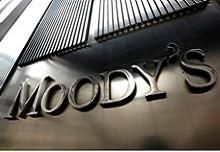(Adds comment from Citigroup’s Simon McGeary )
Moody’s new binary approach to rating hybrids issued by speculative-grade corporates ignores two fundamental points: the risk of a default does not suddenly soar the minute a company slips into junk status, and Europe is very different to the US in terms of bankruptcy laws.
Moody’s said last week that a hybrid issued by a company rated Ba1 or below will now be treated as either pure debt or pure equity, discarding its previous approach where it used five baskets (A to E) to give instruments equity credit ranging from zero to 100%.
Preference shares and long-dated shareholder loans - which have debt form but equity characteristics - will get equity treatment, while everything else is treated as debt.
Moody’s said the reason for the change reflected its view that speculative-grade non-financial companies are materially closer to default, have shorter-dated and more complex capital structures, and carry debt with more covenants.
Although all of that is true, the correlation between lower credit quality and default risk is not linear, and only really spikes once ratings reach Single B, or even Triple C territory.
The rating agency’s data show that European five-year cumulative default rates from 1985 to 2012 were 1.9% for A rated entities, 1.7% for Baa, 5.8% for Ba (the highest rating category for junk) and then jumping to 20.8% for Single Bs and again to 45.2% for Triple Cs.
The changes also do not take into account the wide range of default risk across industry sectors. The one-year default rate forecasts stand at 8.9% in Europe for media, and just 1.5% for telecoms, according to data published by Moody’s in June.
During the first quarter of 2013, eight defaults were recorded in media of which four were from one corporate family – Dex One Corporation.
One hybrid structuring specialist was critical of what he perceived as a delineation between investment-grade and non-investment-grade issuers.
“We find it quite difficult to reconcile how a basket C instrument can go automatically to [an] A basket if an issuer loses its IG rating, simply because of the instrument’s claim in bankruptcy and not taking into account the other loss-absorbing or equity-like features such as coupon deferral,” said AJ Davidson, head of hybrid capital and balance sheet solutions for EMEA and Asia-Pacific at RBS.
US-centric
At the very least, the changes will force investment-grade issuers to go back to the drawing board in order to structure any potential hybrids that had been in the works to try to obtain the full 100% equity credit.
“I can imagine that some companies, which had been toying with the idea of issuing hybrid notes, will now have to revisit their structures to make sure they comply,” said Simon McGeary, head of new products group at Citigroup.
He said the changes were also relevant for lower rated investment-grade companies who want to protect themselves in case of future downgrades.
“I don’t think this change stops issuers accessing the market. If anything, it might make sub-IG issuers consider a hybrid more cost-effective than issuing equity, if the market is there for them,” said Davidson.
But it is a harsh approach, especially for companies on the cusp of junk ratings.
Telecom Italia’s Baa3 senior unsecured and Ba2 subordinated ratings were put on review for downgrade by Moody’s late on Thursday. That signals that it may be junked within the next three months, piling even more refinancing pressure on the company that has some EUR28bn of bonds outstanding.
TI is rated BBB- with a stable outlook by S&P, while Fitch cut its rating to BBB- with a negative outlook on Monday.
If it doesn’t manage to avoid a downgrade by Moody’s, which several analysts now see as a foregone conclusion, its outstanding hybrid issued in March will lose its 50% equity credit and leave the company saddled with even more expensive debt.
The other weak link in Moody’s methodology is its US-centric approach.
Unlike the US, Europe has messy and inconsistent bankruptcy laws, and the notion of a debt claim or equity claim isn’t as clear cut as across the pond. Recovery rates are more uncertain.
This will require hybrid structurers to look at the relevant legal jurisdictions to determine what would qualify as a debt or an equity claim. Moody’s would then need to be convinced.
“In most cases, we think a legal opinion should suffice, similar to legal opinions Moody’s sought in regards to preferred share subordination rankings in investment grade C basket hybrids post the 2010 criteria change,” Davidson said.
